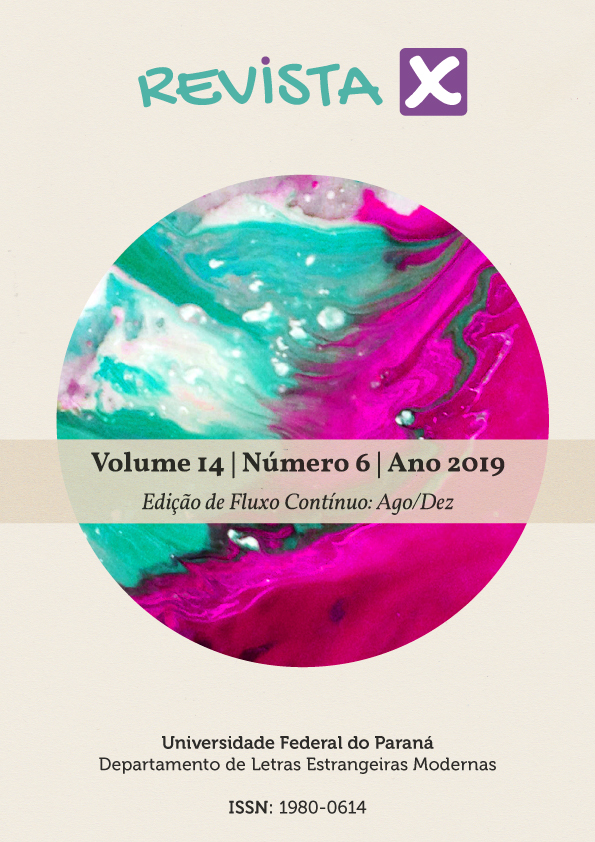LITERATURE AS TIME TRAVEL: ANNOTATED TRANSLATION UNVEILING THE IMPLICIT HYPER-TEXT
DOI:
https://doi.org/10.5380/rvx.v14i6.69109Abstract
The purpose of this article is to discuss the choice for footnotes during literary translation, as an endeavour to re-establish a connection between readers and the story through the references that are made – and which, otherwise, would possibly be lost. More specifically, I herein reflect upon the references provided by the characters of Sunshine sketches of a little town (LEACOCK, 1912), which prove to be pivotal for the affectionate characterisation of Mariposa as a construct of a particular cultural-historical setting. The acknowledgment of hyper-textuality as inherent to the literary experience evinces that translation can operate not as to provide the text with a surface of absolute transparency, but, on the contrary, it has to do with giving a literary piece one more layer of mobile meanings. My findings point to the direction of these unavoidable systems of mobile meanings, and translation might give us the tools to become less colour blind towards the specificity of the other who moves. I want my readers to see in Mariposa, this ever-changing but never-dying town where Leacock’s (1912) novel is set, other stories emerging, with new characters who are (re)born through their translation recreation.
Downloads
Published
How to Cite
Issue
Section
License
The authors retain copyright of all works published by Revista X.
Revista X publishes articles under the Creative Commons — Attribution 4.0 International — CC BY 4.0 license.
The non-exclusive distribution of online papers through institutional and pre-print repositories is hereby authorized.
The author’s style shall be maintained after regulatory, orthographic, grammatical, and layout corrections undertaken during the editorial process.




